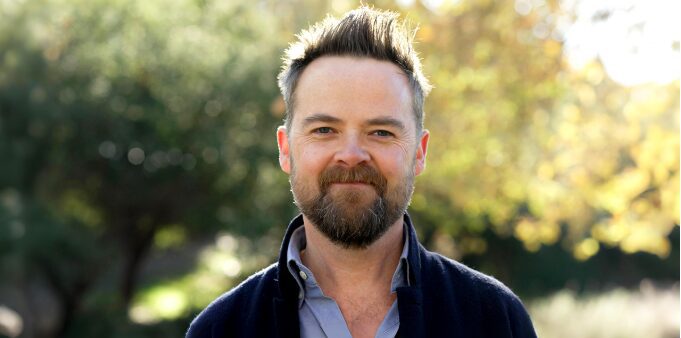What if intention wasn’t just a wish, but a direction? In this interview, Adam Lafferty invites us into a different way of living, one that offers deeper meaning. As someone who’s known for clarity and presence, Adam helps people rise to the challenge of modern complexity by helping them become more aware. He bases his work on how systems think, neurobiology, and his own lived experience.
In this interview, Adam explores how coherence in mind, body, and emotion can shift what’s possible. He talks about the difference between reacting and responding, why purpose needs to be felt before it’s followed, and how intention might be the most underused resource in personal and collective growth.
Adam, thank you for joining us. Your work often explores the intersection of intention and impact. How do you define “the power of intention,” and why is it foundational to aligning with our highest good?
Adam Lafferty: We’re taught to focus on outcomes. Metrics. Mastery. But intention works upstream of all that. It’s not about control—it’s about coherence. It’s the inner alignment that makes our outer actions ring true.
Intention shapes what we notice. It filters the noise. It tells your nervous system what to care about when everything feels urgent.
For high performers, especially, this isn’t a luxury—it’s the leverage point. Because performance without intention might make you successful, but it won’t make you whole.
In your America Daily Post article, you discuss how a person’s state of mind shapes their leadership impact. How does intentionality help leaders maintain clarity and meaning in high-pressure environments?
Adam Lafferty: Pressure doesn’t invent who we are—it reveals what’s running us. Intentionality acts like a quiet compass when everything else is spinning.
In fast-moving environments, it’s easy to confuse urgency with importance. But intentional leaders don’t just ask “What needs doing?” They ask, “What’s worth doing—really?”
Intentionality helps you move from reaction to response, and ultimately to receptivity. From noise to signal. And when your actions are anchored in what matters most, you don’t just stay steady—you help others steady themselves too.
Many people set goals without aligning them to a deeper purpose. How can someone distinguish between surface-level ambition and a truly purpose-driven intention?
Adam Lafferty: Ambition says: “What can I achieve?” Intention asks: “What am I here to contribute?”
Surface-level ambition usually echoes the old script: status, optics, validation. It’s loud. Urgent. Impressive.
Purpose-driven intention is quieter, but stronger. It feels like resonance, not performance. You don’t hustle for it. You remember it.
A litmus test I give clients: “If no one applauded, would this still feel right?”
You often speak about alignment, not just with purpose but with timing. What practices help individuals recognize when they are forcing outcomes versus allowing purpose to unfold through them?
Adam Lafferty: Forcing feels like friction. Clenching. Overriding your own signals.
Allowing doesn’t mean passivity. It means discernment—listening for what wants to emerge rather than muscling your way forward.
Practices that help? Stillness. Somatic check-ins. Honest conversation that invites—not interrupts—clarity.
One grounding question I use often: “Does this feel like alignment—or performance?”
In your San Francisco Post feature, you mention the metaphor of “securing your own oxygen mask first.” How does self-alignment with coherence and purpose influence our ability to uplift and lead others effectively?
Adam Lafferty: People don’t follow our résumés. They follow our resonance.
And resonance comes from coherence—when what we believe, how we act, and who we are show up in the same room.
When we’re aligned, we don’t have to try to inspire people. We give them something real to tune to.
We can’t transmit what we haven’t integrated. But when we lead from alignment, people don’t just hear our words—they feel our presence.
As we close, for those seeking to live with greater meaning and coherence in their day-to-day lives, what first step would you recommend they take to begin living with intention?
Adam Lafferty: Start by listening to what you’ve been overriding.
Most people already sense what’s off—they’ve just been too busy, too strategic, or too tired to name it. I sometimes call it being “authentic with inauthenticities.”
A simple prompt: “What am I pretending not to know?”
Then take one step—not to fix, but to align. A pause before the next yes. A walk without a podcast. A truth told to someone who matters.
Intention doesn’t begin with effort. It begins with attention. And attention—placed wisely—is what reshapes everything.
Conclusion
Adam Lafferty reminds us that real change starts with presence. Today, everyone is rushing towards quick solutions, so he gives a simple message: slow down, listen in, and act from what matters most. He helps clients become more aware and notice their own inner condition before stepping into any room. It’s about trusting that the alignment between your language, energy, and intent can shape the outcomes you care about.
Through this interview, he has touched on coherence, purpose, and the quiet strength of acting from meaning rather than momentum. Adam offers frameworks that leave room for reflection, nuance, and honesty. The power of intention, as he sees it, isn’t fluffy or abstract. It’s a muscle. One that builds clarity, strengthens choice, and reconnects us with what’s possible.

